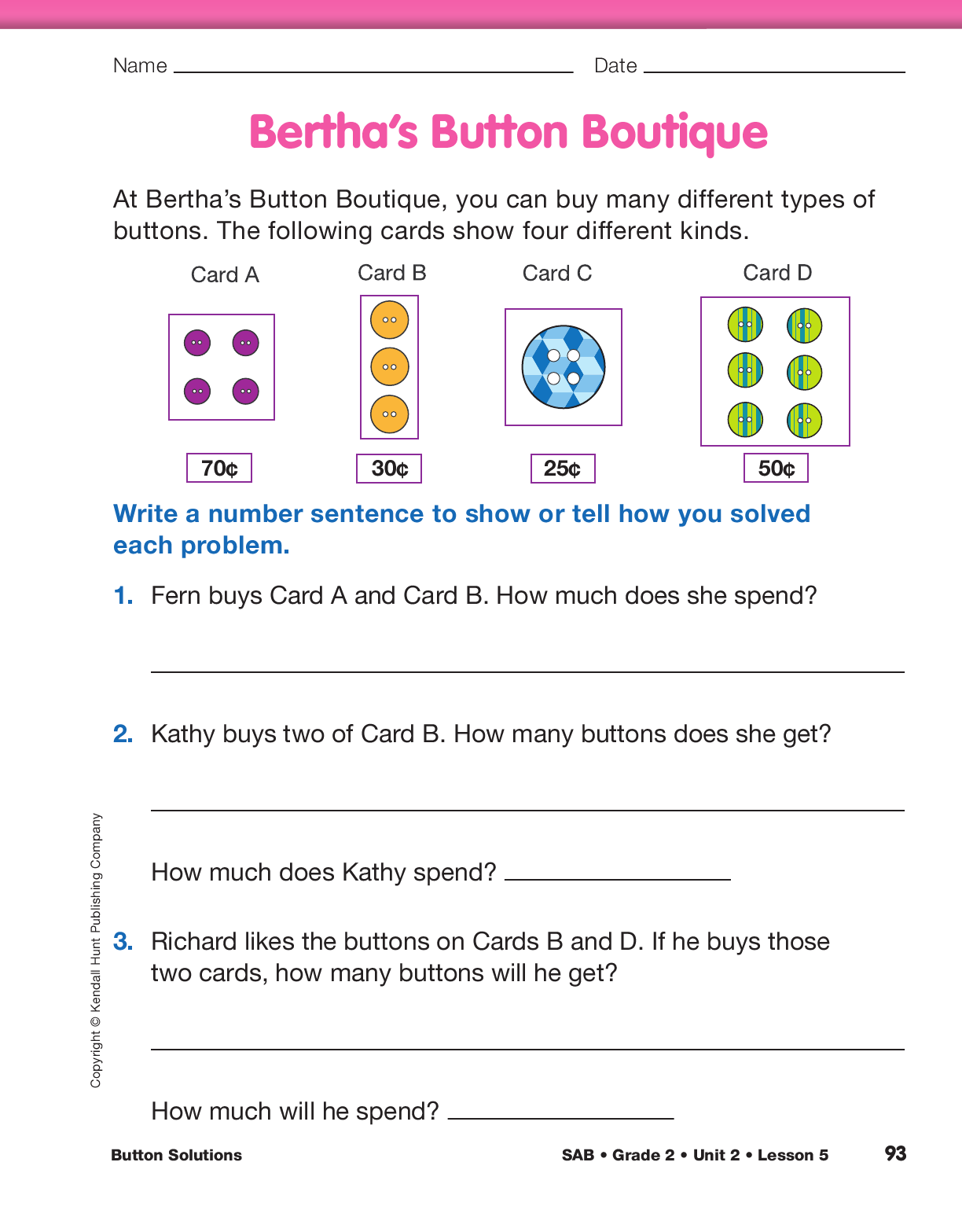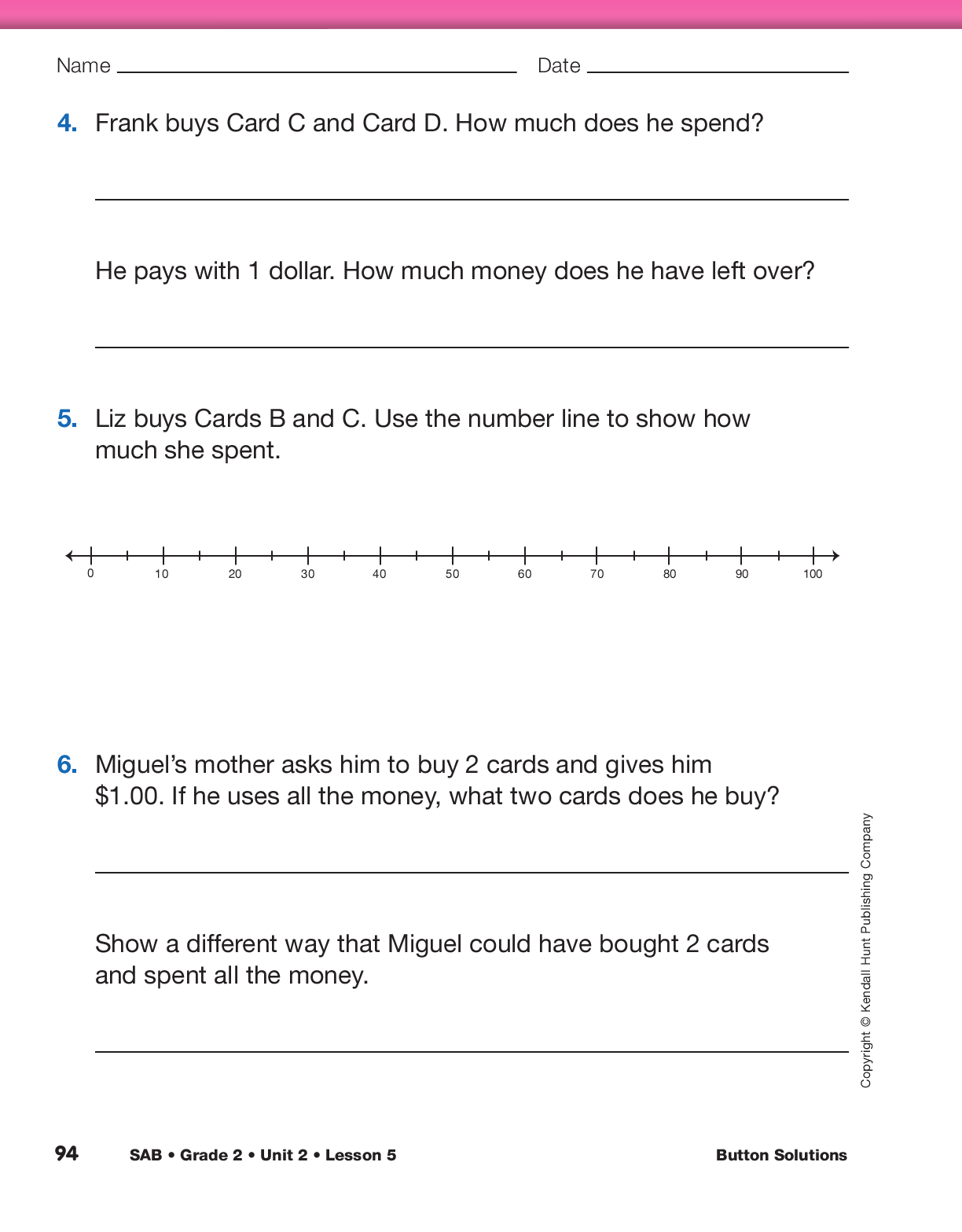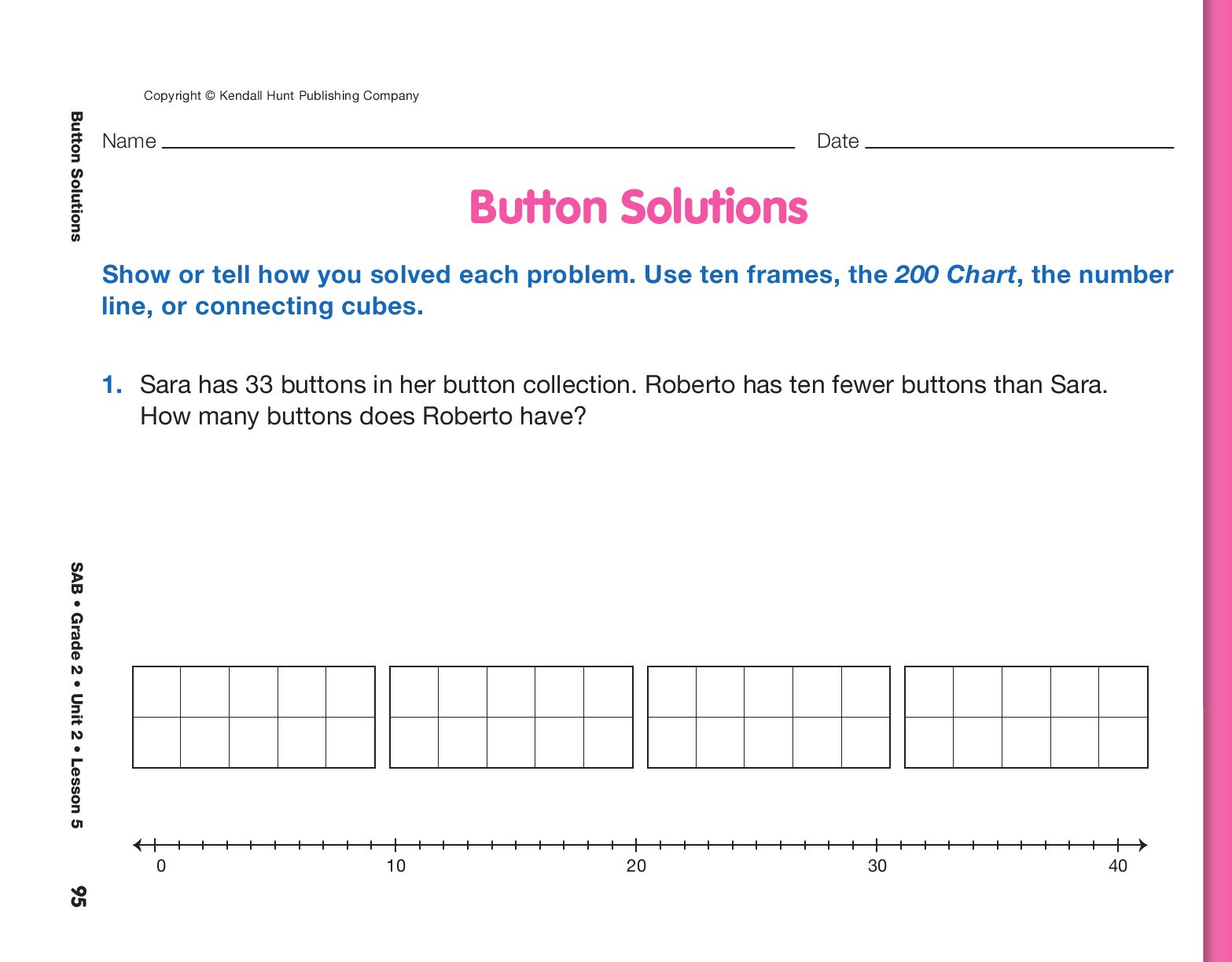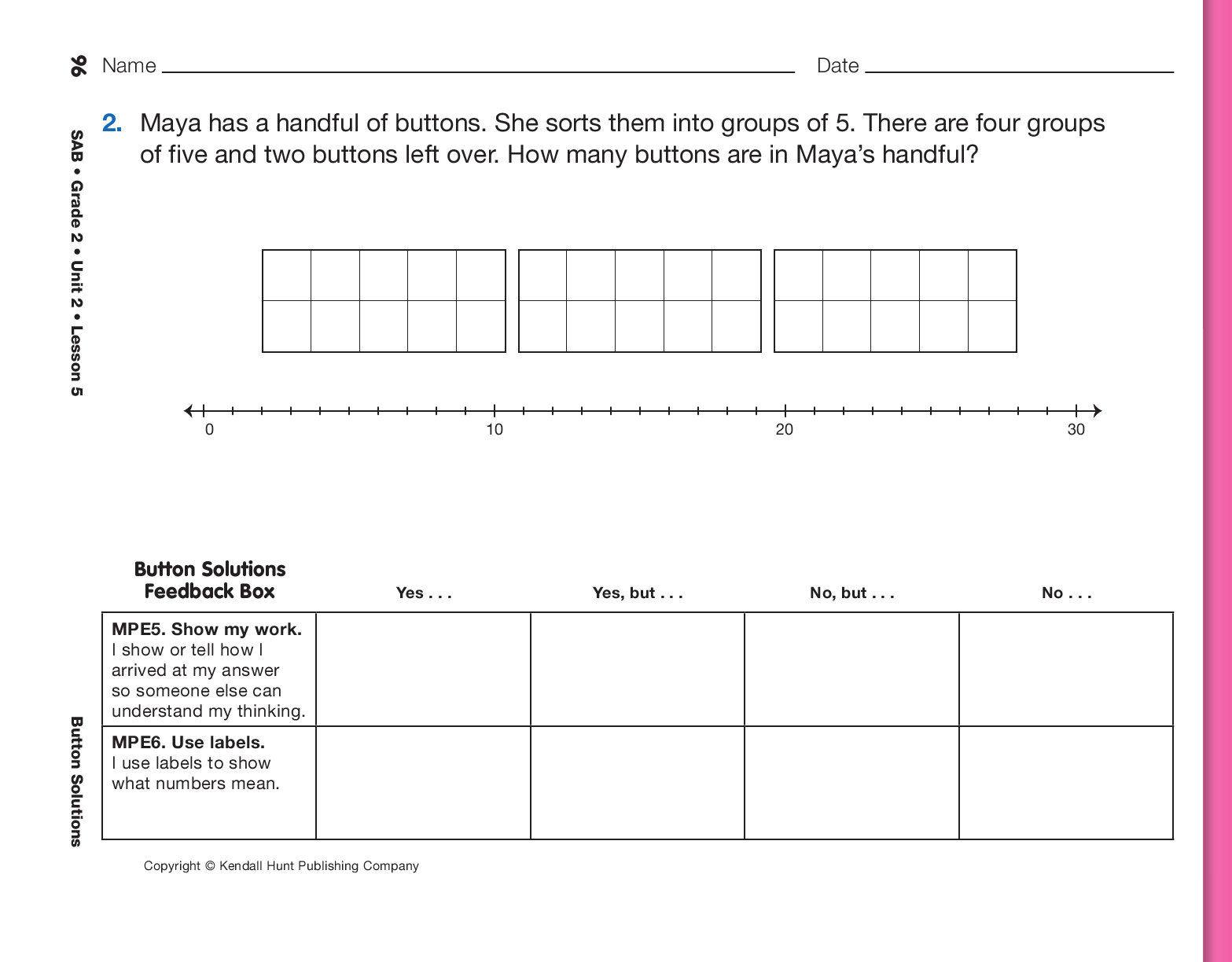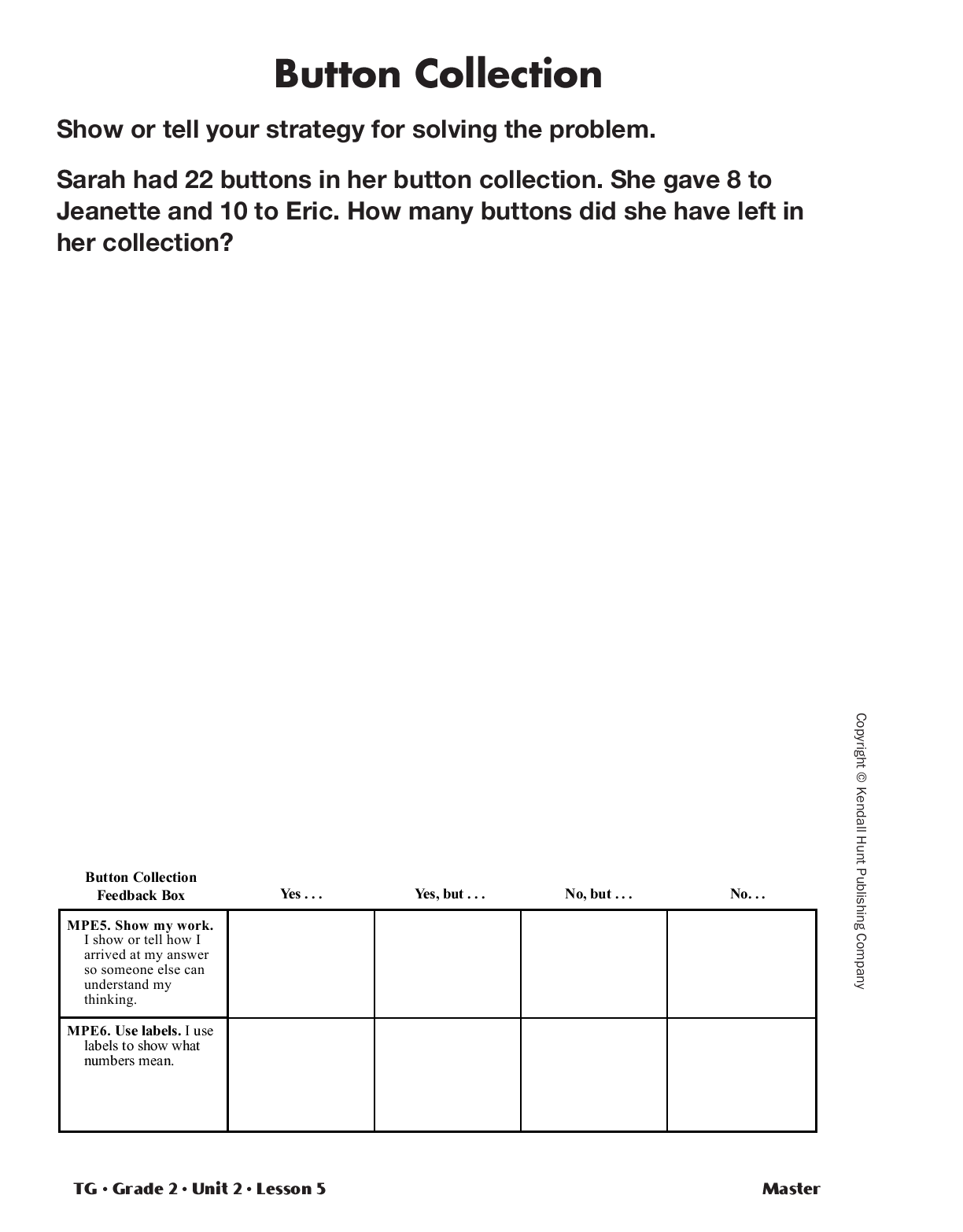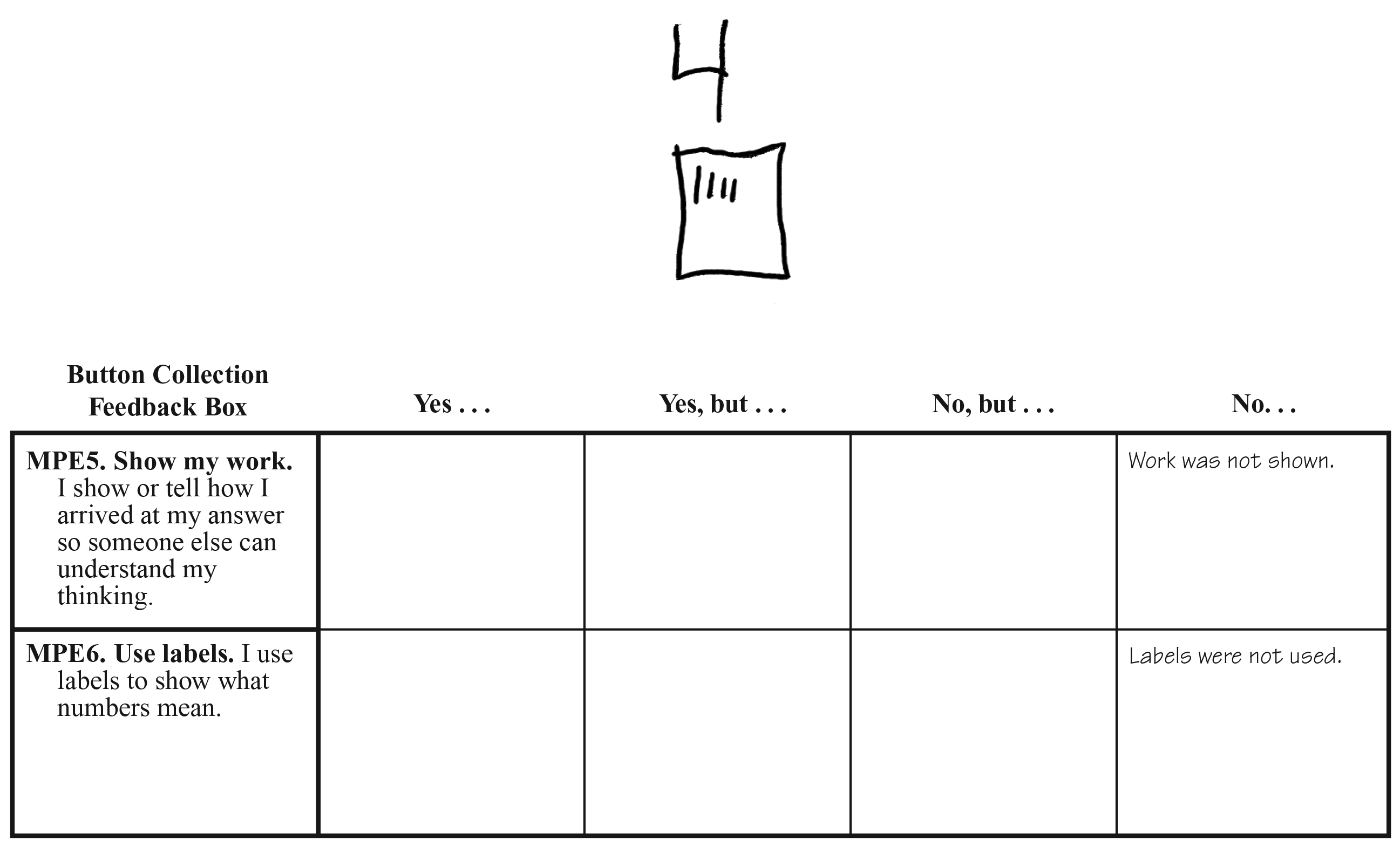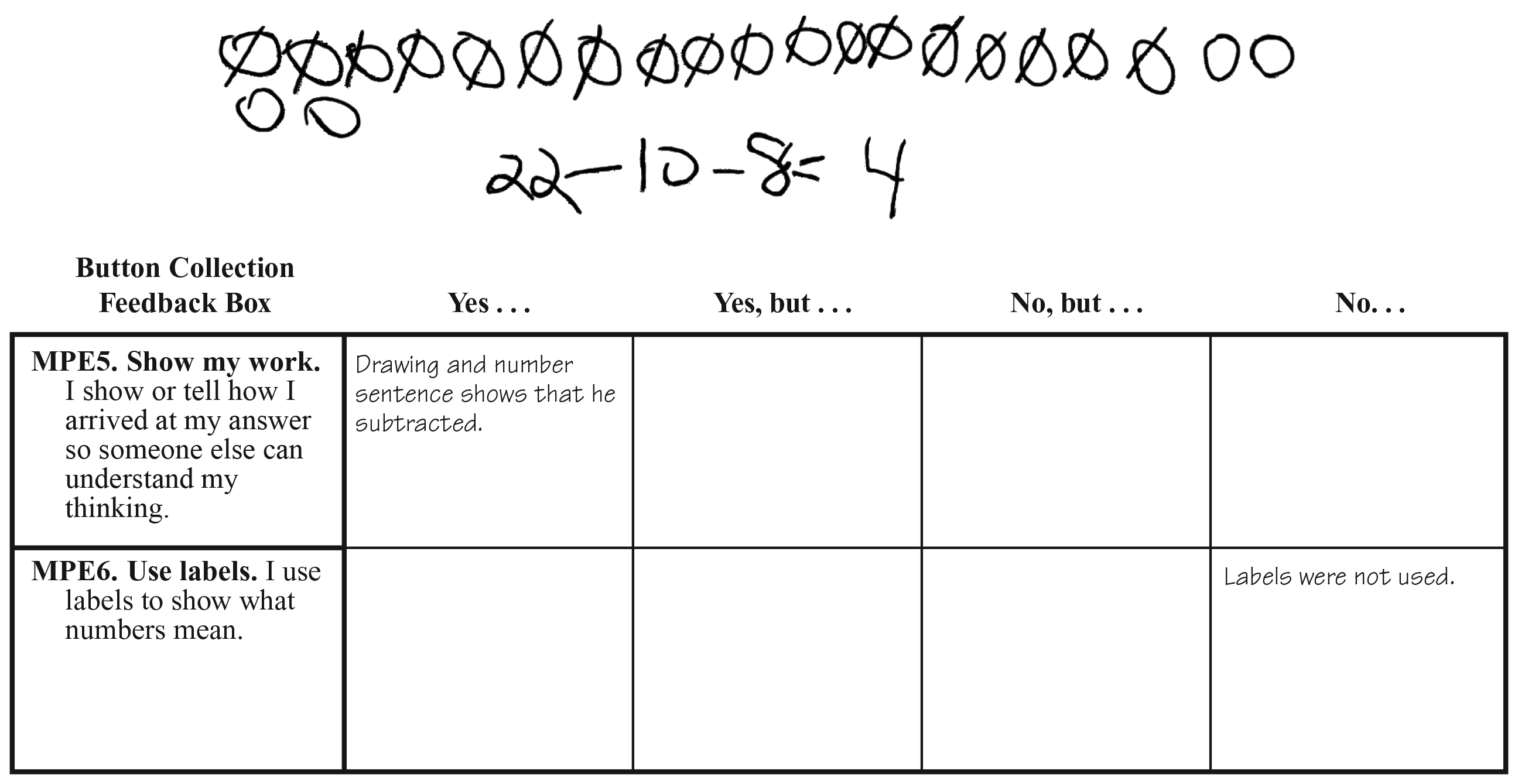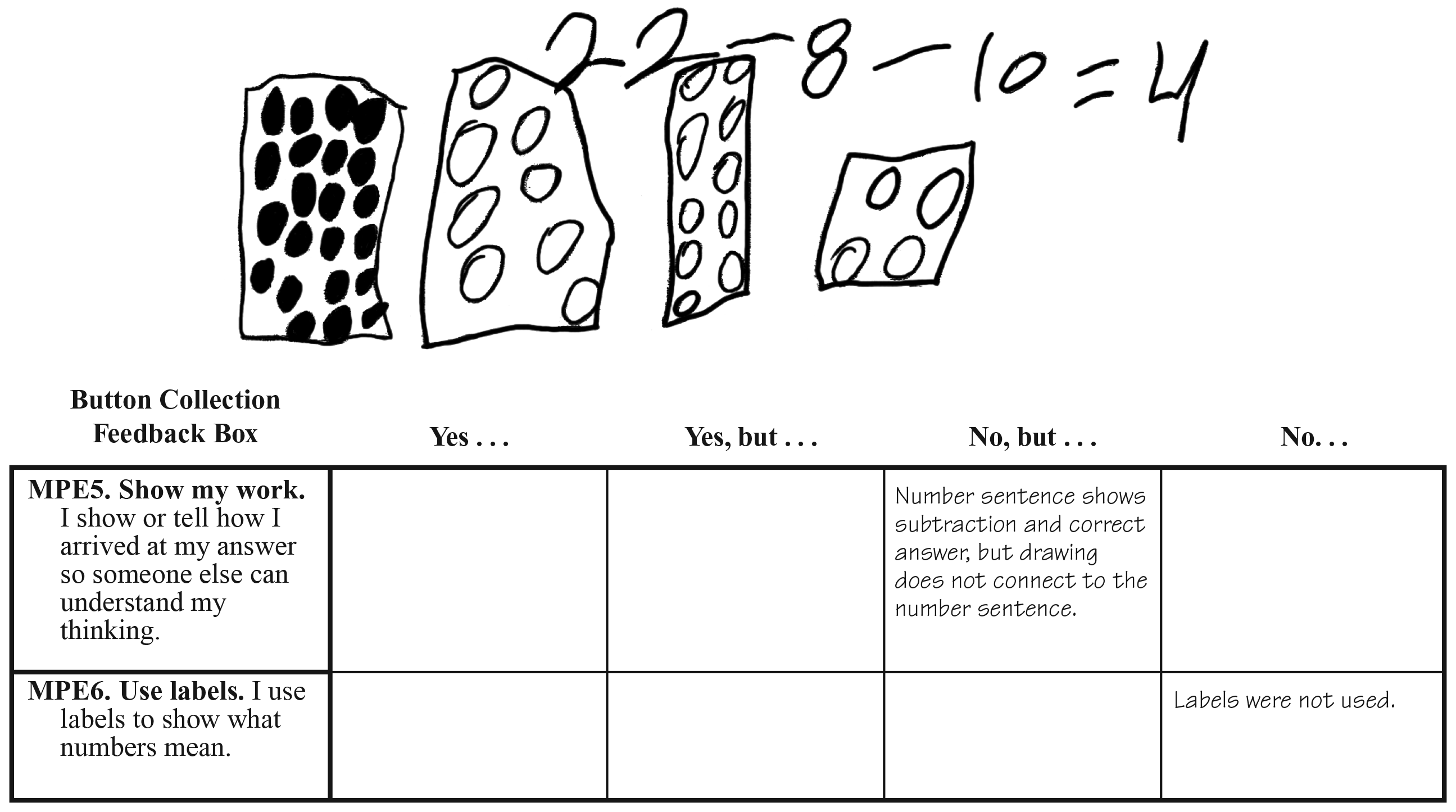Button Solutions
Est. Class Sessions: 2Developing the Lesson
Show $1 in Different Ways. Begin the lesson by reviewing the ways students learned in first grade to make $1.00 using nickels, dimes, and quarters. Ask students to work with their partner to come up with two ways to make $1.00. After students have had a few minutes, ask them to use a display set of coins to share their solutions as you record them on the chart. See Figure 1. Encourage students to count the coins to show how they make $1.00.
Share Strategies and Tools. Next have students look at the card samples on the Bertha’s Button Boutique pages in the Student Activity Book.
Pose the following problem:
Ask students to consider how they can solve this problem. As students give their ideas, list their strategies and tools on the board, accompanied by the students’ names. After a student has suggested a strategy, ask others to explain it in their own words or to solve a different but similar problem using the same strategy. See the Sample Dialog.
Tell students to work in pairs to solve the problems on the Bertha’s Button Boutique pages in the Student Activity Book. Display and ask students to turn to the Math Practices page in the Reference section of the Student Activity Book.
As students share their solution to the problems, reference the appropriate Math Practices expectations and ask:
Discuss Math Practices Expectations. Distribute and read the problem on the Button Collection Master. Ask students to solve the problem.
Ask:
Tell students to look at their work and ask:
Next ask students to look at their neighbor’s work and ask:
Display the Jackie’s Work Master and ask:
Use the Feedback Box at the bottom of the Jackie’s Work Master to provide her with feedback about Math Practice Expectations 5 and 6. Both sets of feedback would be under the “No” column of the feedback box. See Figure 2.
Display the Jerome’s Work Master and ask:
To help students decide on the types of feedback the student needs, describe the column headings of the feedback box:
Complete Jerome’s Feedback Box. See Figure 3.
Use a similar process with the Grace’s Work Master asking the same or similar questions. Grace’s answer uses the minus sign in her number sentence, but her drawing does not indicate how or what she subtracted or “took away.” Complete the feedback box for Grace’s work together. See Figure 4.
Ask students to look at their own solution to the problem on the Button Collection page.
Ask:
Encourage students to revise their work to meet the Math Practices Expectations.
Practice Showing Math Practices 5 and 6. Tell students that they are to complete the Button Solutions pages in the Student Activity Book. Tell them they should think about Math Practice 5, Show my work, showing all their thinking and steps taken, and Math Practice 6, Use labels, in the steps in their solution and in their answer. As students are working, circulate asking students to clarify their written solutions and include labels on their work.

















